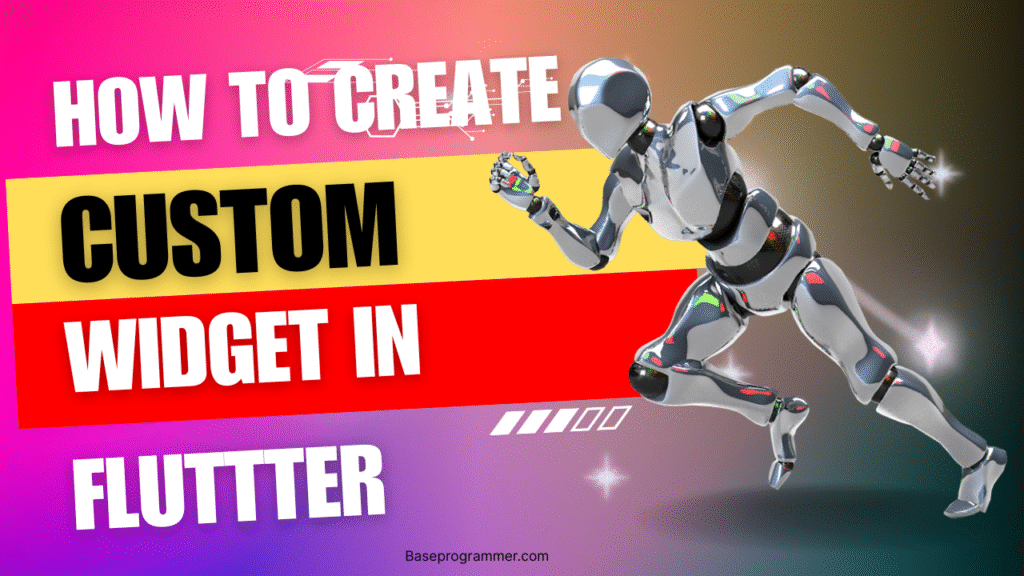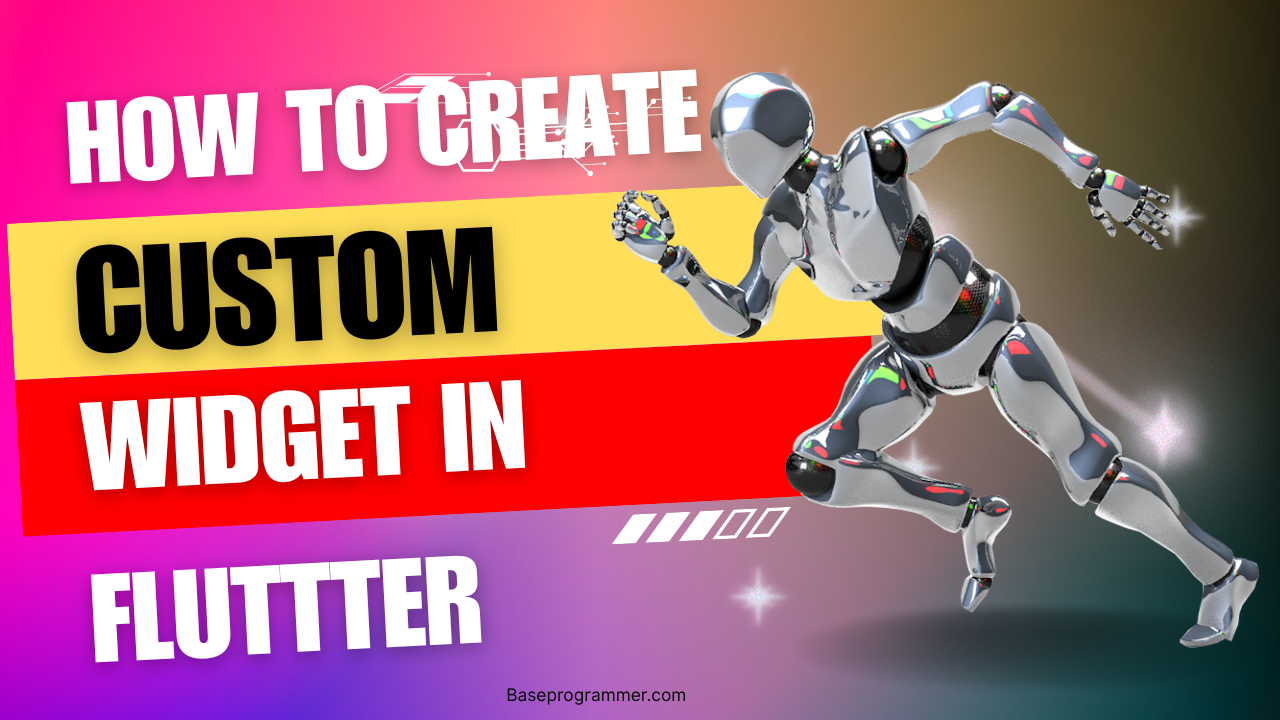In this blog I will guide you how to create a custom widget in flutter apps in 2025. By using of the Custom widget it help to reuse our flutter widget many time and also save the time and it also help to optimize the performance of the flutter.

Table of Contents
Introduction of Custom Widget in Flutter :
Flutter has become one of the most popular frameworks for building mobile apps, web apps, and desktop applications. One of the most powerful features of Flutter is its widget-based architecture.
But sometimes, the built-in widgets are not enough. In that case, you can create your own custom widget. In this article, we’ll explain step by step how to create a custom widget in Flutter in 2025 with examples, best practices, and SEO-friendly insights.
What is a Custom Widget in Flutter?
A custom widget is simply a widget you design yourself. It can be:
- A combination of existing widgets.
- A reusable widget with its own structure, design, and functionality.
For example, if you use the same type of button or card in multiple places, instead of rewriting the code every time, you can create a custom widget once and reuse it everywhere and its save the time and make your code shorter.
Why Should You Create Custom Widgets?
- Reusability – Write once, use anywhere in your app.
- Maintainability – If you need to change the design, just update your widget in one place.
- Clean Code – Breaks your UI into smaller pieces, making your code easier to read.
- Scalability – Helps when your app grows bigger.
Steps to Create a Custom Widget in Flutter:
1.Create a New Dart File
Inside the lib/ folder, create a new file for your custom widget.
2.Import Flutter Package
import 'package:flutter/material.dart';3. Create a StatelessWidget or StatefulWidget
Most custom widgets are StatelessWidget, but if you need to manage state (like animations or user input), use StatefulWidget.
Example (StatelessWidget):
class CustomButton extends StatelessWidget {
final String text;
final VoidCallback onPressed;
const CustomButton({
super.key,
required this.text,
required this.onPressed,
});
@override
Widget build(BuildContext context) {
return ElevatedButton(
style: ElevatedButton.styleFrom(
backgroundColor: Colors.blue,
padding: const EdgeInsets.symmetric(horizontal: 20, vertical: 12),
shape: RoundedRectangleBorder(
borderRadius: BorderRadius.circular(12),
),
),
onPressed: onPressed,
child: Text(
text,
style: const TextStyle(fontSize: 16, color: Colors.white),
),
);
}
}
4.Use Your Custom Widget
Now you can use CustomButton anywhere in your app:
CustomButton(
text: "Click Me",
onPressed: () {
print("Button Pressed!");
},
),
Example of a More Complex Custom Widget:
class CustomCard extends StatelessWidget {
final String title;
final String subtitle;
final IconData icon;
const CustomCard({
super.key,
required this.title,
required this.subtitle,
required this.icon,
});
@override
Widget build(BuildContext context) {
return Card(
shape: RoundedRectangleBorder(borderRadius: BorderRadius.circular(16)),
elevation: 4,
child: ListTile(
leading: Icon(icon, size: 32, color: Colors.blue),
title: Text(title, style: const TextStyle(fontWeight: FontWeight.bold)),
subtitle: Text(subtitle),
),
);
}
}
Use like this below code :
CustomCard(
title: "Flutter 2025",
subtitle: "Build beautiful apps faster",
icon: Icons.flutter_dash,
),
Conclusion:
Creating custom widgets in Flutter (2025) is a must-have skill for every developer. It makes your app cleaner, scalable, and easier to maintain. Start with simple widgets like buttons or cards and gradually build more complex UI components.
FAQs create custom widget in Flutter
Q1. What is a custom widget in Flutter?
A custom widget is a user-defined widget that combines multiple widgets or adds new functionality for reusability.
Q2. Which is better for custom widgets: StatelessWidget or StatefulWidget?
Use StatelessWidget if your widget doesn’t change, and StatefulWidget if it needs to manage state.
Q3. Where should I store my custom widgets?
It’s best to create a widgets/ folder inside lib/ for better organization.
Q4. Can I use custom widgets across multiple projects?
Yes, you can package your custom widget as a Flutter package and reuse it in different apps.
Q5. Why is creating custom widgets important in Flutter 2025?
It saves time, makes your code clean, and ensures a consistent UI in your app.
Read Documentation: Click Here
Read More Articles:
